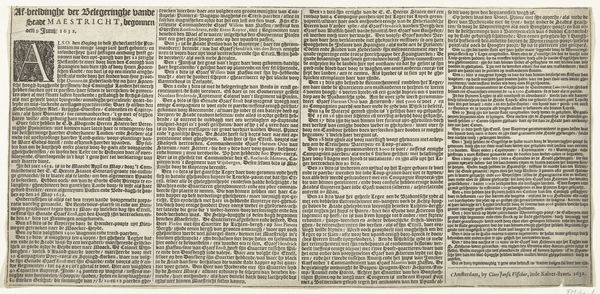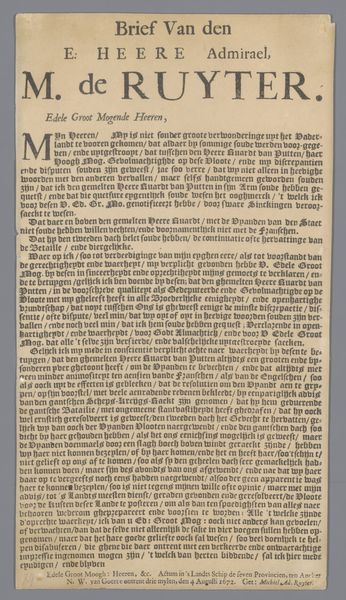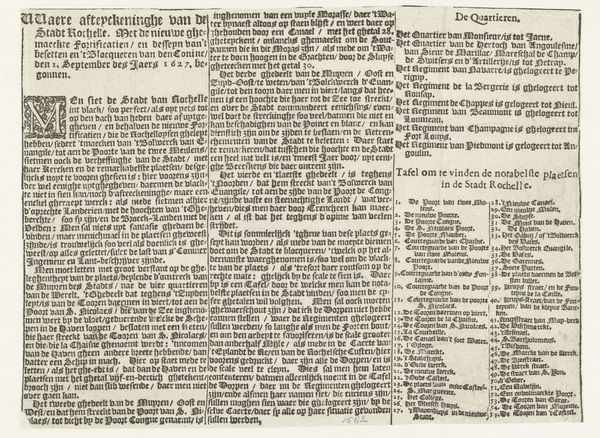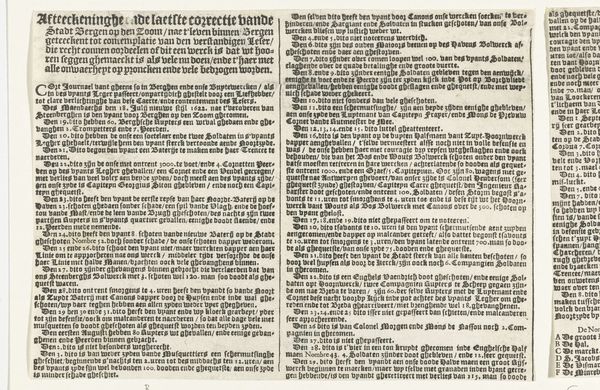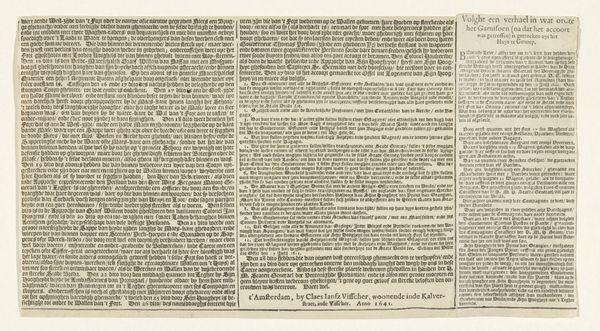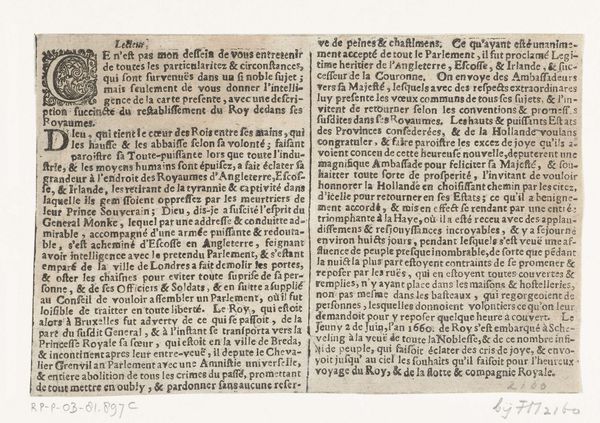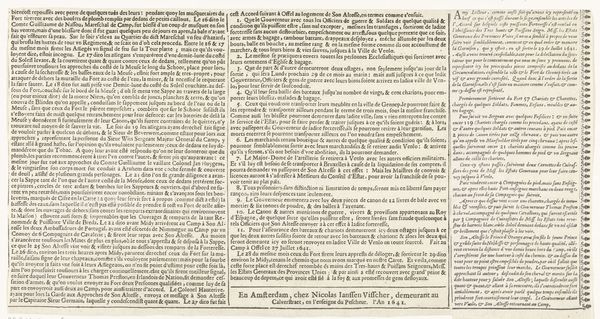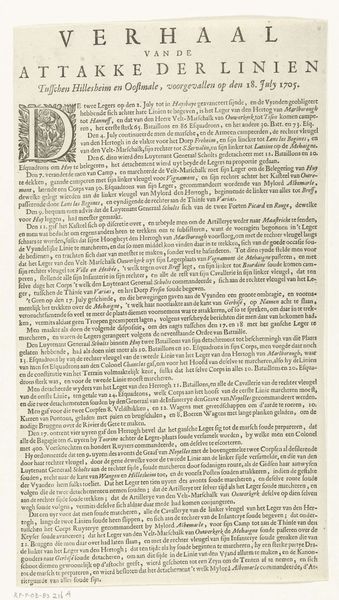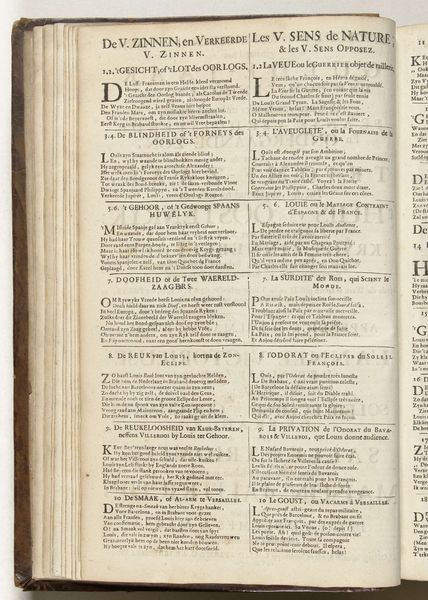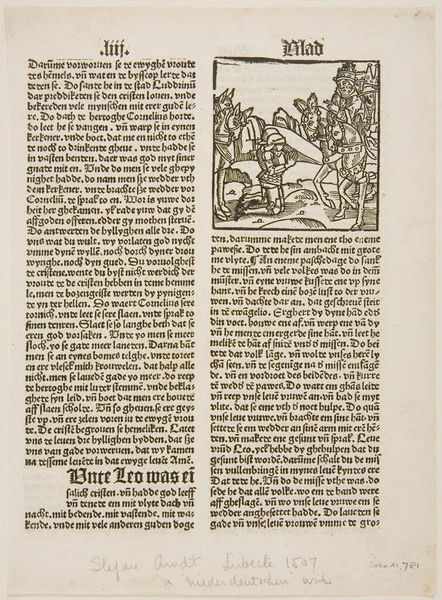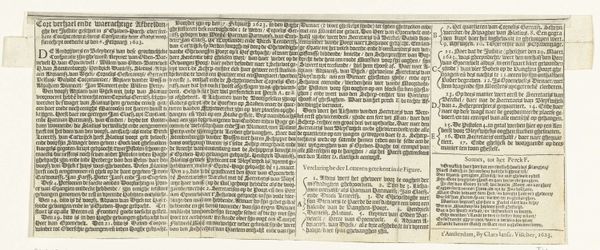
Tekstblad (eerste deel) bij de plattegrond van het belegerde Sas-van-Gent, 1644 1644
0:00
0:00
claesjanszvisscher
Rijksmuseum
print, textile, paper, engraving
#
dutch-golden-age
# print
#
textile
#
paper
#
history-painting
#
engraving
Dimensions: height 171 mm, width 270 mm
Copyright: Rijks Museum: Open Domain
Editor: Here we have a "Tekstblad bij de plattegrond van het belegerde Sas-van-Gent, 1644," a descriptive text for the plan of the besieged Sas-van-Gent from 1644. It's by Claes Jansz. Visscher, created as an engraving on paper. It seems overwhelmingly text-based and factual, less an artistic expression and more a document of an event. What can you tell me about this from a historian's point of view? Curator: This print offers us a glimpse into the intersection of warfare, print culture, and national identity in the Dutch Golden Age. Think about how information was disseminated in this period. A printed sheet like this served as a crucial means of communicating events and shaping public opinion. The siege of Sas-van-Gent was clearly a pivotal event, deserving this detailed documentation. Notice the typography and layout; how does the design influence its message and perceived authority? Editor: It does seem authoritative with its dense text, but I can't read 17th-century Dutch. I guess it also implies that literacy was pretty widespread, or at least that someone would read it aloud in public. Curator: Precisely! And consider the political dimensions. The "Sas van Gent" controlled key waterways; control over this region symbolized a much broader battle for territory, trade, and religious dominance. How does the image itself contribute to a national narrative or project a certain image of the Dutch Republic? How might the sponsors and the consumers of these prints affected the politics of imagery and its influence in contemporary Dutch society? Editor: So, it wasn't just about relaying facts. This engraving played a part in a bigger struggle over national identity and perhaps bolstering morale during wartime? Curator: Exactly. Understanding this print requires placing it within the larger historical context of the Eighty Years’ War and considering how prints functioned as propaganda tools. Editor: That gives me a lot to think about. It's interesting to see a print that’s not necessarily *art* but plays a huge cultural role. Thanks! Curator: Indeed. Hopefully, next time you're examining art you'll not just look at aesthetic values, but try to examine its socio-historical importance.
Comments
No comments
Be the first to comment and join the conversation on the ultimate creative platform.

